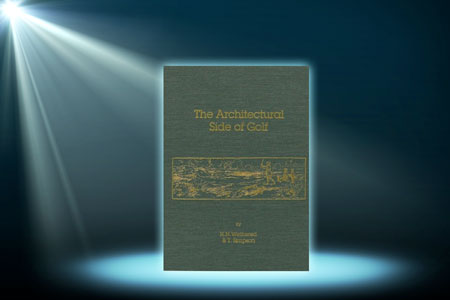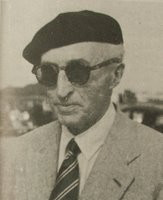
This week’s feature from Classics of Golf spotlights the 1929 classic, The Architectural Side of Golf by H.N. Wethered and T. Simpson.
Written at the close of the golden era of golf architecture, The Architectural Side of Golf is considered the grandest literary gem of its discipline. It is the last and most lavish of the several books on design published during the 1920s, with 44 plates drawn by Simpson and 26 etchings by Wethered. The authors reaped the benefit of seeing prior publications and crafted this to be as little like a textbook as possible, while exploring a wide variety of subjects directly and indirectly related to architecture.
Wethered and T. Simpson surmise that the art of the golf course is at a crossroads in the late 1920s. Gone are the days where players were “a mere handful of local enthusiasts who did not, perhaps, take the game in quite as serious a spirit as is the present custom.” The modern ball and clubs produce better, longer shots of controlled shapes in the hands of the pros. Match play has given way to stroke play and thus increased attention to every strike. This is modern golf, attacking all the time, shooting for the pin. The best players now practice regularly—even putting—and thereby invent all manners of shots to escape trouble. Wethered and T. Simpson ponder how an architect can defend the onslaught against par.
The discussion that “today’s golf ball goes too far” remains as relevant today as it was during the Roaring Twenties.

T. Simpson image via Teetimes.info
“In all probability there is still room for an additional length quite sufficient to upset present calculations,” Simpson and Wethered predicted in The Architectural Side of Golf.
Another concern for architects of that era—and ours—is the degree to which wedge play had been perfected. In the search to frustrate the constantly dropping scores, success is not to be found in lengthening the holes—the ball will keep going further. Rather, they argue, architects need to allow semi-rough to come into play more, make primary rough penal; reduce the size of the greens and remove backdrops that provide clues to distance; let every bunker and hazard be strategic.
Finally, the authors caution keep everything in proportion. Remember that only one percent of golfers are “cracks” and the average guys are the ones who really keep the club afloat. Wethered and Simpson challenge all designers not to fail in any of the obvious points for building courses: every hole should be interesting; the maximum variety of holes allowed by the site should be provided; the natural beauty of the country should be impaired as little as possible; a premium should be put on good golf; and the course should be equally interesting and amusing to the first-rate and the second-rate golfer. The discipline needed to abide by these hard and fast rules is more than many architects have been able to muster.
Whatever it was before, golf became a blend, an amalgamation of art and science. More than anything, it became paramount that the architect be alert to their proper balance. Science can overpower the artistry of man imitating nature, just as seeking perfection in artistry can confound science. Given the fluid nature of golf and its components, it is a testimony to the value of this work that its subjects remain germane in any given greens committee meeting today.
One of the best golf course architecture books in the Classics of Golf library, The Architectural Side of Golf also contains a foreword by Herbert Warren Wind.
$50.00Add to cart

